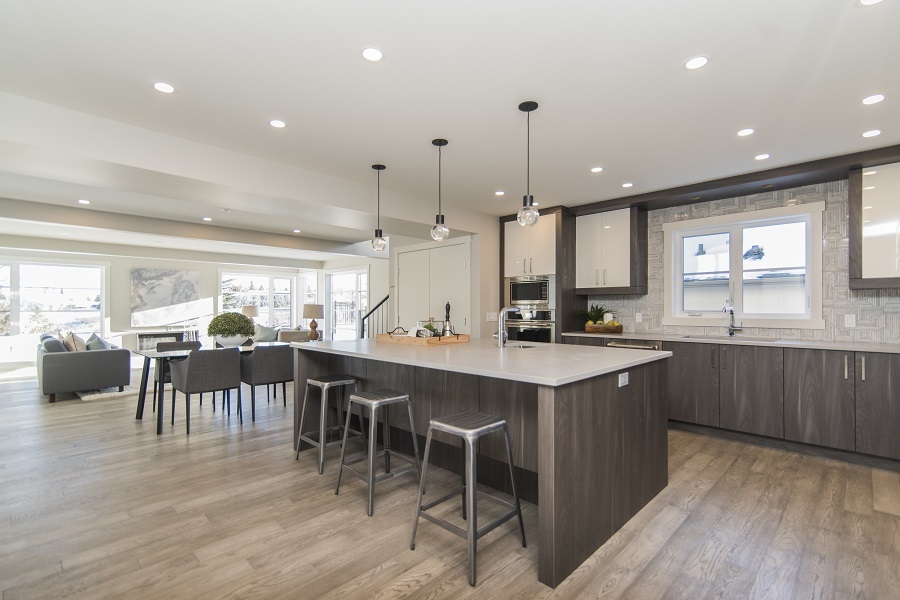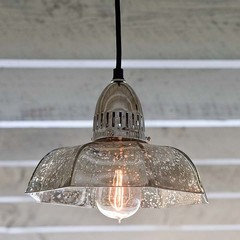Modern kitchen island pendants have become a focal point in contemporary kitchen design, adding functional lighting and aesthetic appeal. These hanging fixtures are strategically positioned over kitchen islands, illuminating meal prep areas, adding ambiance, and enhancing the kitchen’s overall aesthetic. Unlike traditional kitchen lighting, pendants offer a unique, customizable touch that can elevate the room’s style.
The design choices for modern kitchen island pendants are vast, ranging from minimalist to ornate, in materials from metals to glass, and styles from industrial to bohemian. This versatility allows homeowners to choose pendant lights that harmonize with their kitchen’s design and personal style. Whether you are designing a sleek, modern kitchen or a cozy farmhouse-style space, pendant options suit every aesthetic.

In addition to aesthetic appeal, functionality is a key consideration when choosing modern kitchen island pendants. Many pendants come with adjustable heights, allowing you to customize the light’s position for optimal lighting. Adjustable lighting is particularly useful over a kitchen island, where tasks such as chopping vegetables or reading recipes require a focused, bright light.
Meanwhile, a softer, ambient glow might be more suitable for dining or socializing. Dimmable pendant lights provide flexibility to transition between bright task lighting and warm, ambient light for an inviting atmosphere. Additionally, LED pendant lights have become popular for their energy efficiency and long lifespan, making them a practical choice for kitchens, where lighting is used extensively.

When selecting the right pendant lights, the size and shape of the island, as well as the overall kitchen layout, are essential considerations. A common guideline is to leave around 12 to 15 inches of space between each pendant for a balanced look. For larger islands, multiple pendants, usually in odd numbers like three, create visual symmetry and distribute light evenly across the workspace.
On smaller islands, a single, sizable pendant can create a dramatic focal point without overwhelming the space. Pendant heights are equally important, as they need to provide adequate lighting while not obstructing the line of sight across the kitchen. The recommended height is generally 30 to 36 inches above the island countertop, though adjustable fixtures allow for some customization based on the room’s needs.

Modern pendant lights are available in a variety of shapes, including globes, cylinders, and geometric designs. Globe-shaped pendants are classic and work well with mid-century modern and contemporary styles. Cylindrical and drum-shaped pendants offer a more industrial or modern farmhouse look, especially when paired with metal finishes like matte black or brushed brass.
Geometric pendants, with intricate shapes or angular designs, are ideal for adding a modern or eclectic touch. Each shape and style has its effect on the kitchen’s vibe, and selecting the right design can dramatically influence the kitchen’s look and feel. Choosing a pendant that aligns with the room’s style will create a cohesive design that is visually appealing.
Materials used in pendant lights can also play a big role in defining the kitchen’s character. Metal pendants with finishes such as chrome, brushed nickel, or black metal are popular in modern kitchens, providing a sleek, polished look. Copper and brass finishes offer a warmer, more vintage appeal that contrasts beautifully with modern cabinetry and countertops.
Glass pendants, whether clear, frosted, or colored, provide another layer of texture and add visual interest. Clear glass pendants allow for bright illumination and create a sense of openness, while frosted or colored glass can add a pop of color and a softer, diffused glow. Wooden or woven pendants can add a touch of natural texture, working well in bohemian or rustic-style kitchens.

Beyond materials and shapes, the choice of bulbs also impacts the kitchen island pendant’s effectiveness and aesthetic. Edison bulbs, with their vintage filament design, are popular in industrial-style pendants and provide a warm, atmospheric light. For a more modern look, LED bulbs are preferable due to their longevity and energy efficiency, and they come in various color temperatures to match the kitchen’s ambiance.
Choosing a bulb with the right color temperature is important; warmer tones (around 2700K) offer a cozy, inviting feel, while cooler tones (4000K and above) are better for task lighting. Smart bulbs are another option, allowing for easy control of brightness and color through a smartphone app or voice assistant, adding a touch of modern convenience.
The placement of kitchen island pendants should complement the kitchen’s layout and functionality. Pendants should ideally be centered over the island, and aligned evenly to avoid uneven lighting or awkward shadows. For an open-plan layout, pendant lighting can help define the kitchen area, creating a visual boundary between the kitchen and adjacent living or dining spaces.
Furthermore, using pendants in combination with other lighting, such as recessed ceiling lights or under-cabinet lights, ensures a layered lighting effect that covers every corner of the kitchen. Layered lighting is crucial in kitchens, where a combination of ambient, task, and accent lighting enhances both functionality and aesthetics.

Pendant lights can be grouped in several configurations, each suited to different kitchen layouts. Linear arrangements, where pendants are aligned in a straight line, work best for long kitchen islands or peninsulas. Clustered arrangements, where pendants are grouped close together, are ideal for smaller islands or for creating a statement piece in a compact kitchen. Asymmetrical arrangements are a more modern, artistic approach, where pendants of different shapes, sizes, or heights are arranged in a seemingly random order, adding a creative and playful element to the kitchen. Each configuration style offers a unique way to highlight the kitchen island and make it the central attraction.
Color choice in pendant lighting is another factor that affects the overall kitchen aesthetic. White or neutral-colored pendants blend seamlessly into the background, creating a minimalist look, while bold-colored pendants can serve as statement pieces. Darker colors like black or navy provide a striking contrast in white or light-colored kitchens, adding a touch of sophistication. Metallic finishes, such as gold, copper, or silver, add a touch of glamour and work especially well in modern or eclectic kitchens. When choosing colors, it’s essential to consider the kitchen’s color palette and how the pendants will harmonize or contrast with the cabinetry, countertops, and other finishes.
Pendant lighting can also serve as a means to express personal style and creativity. Customizable pendants allow homeowners to mix and match colors, shapes, and materials for a unique design. Artistic or designer pendants can add an unexpected twist to the kitchen, serving as conversation pieces that reflect the homeowner’s personality. With many pendant lighting options available, from artisanal hand-blown glass pendants to sculptural designs, it’s easy to find a fixture that adds a unique flair to the kitchen. The right pendant can transform a functional space into a stylish, inspiring environment where cooking and socializing become a joy.

In many modern kitchens, pendant lights are paired with other decorative elements to create a cohesive, thoughtfully designed space. The finishes of pendant fixtures are often matched with cabinet handles, faucets, or other metal elements for a coordinated look. Alternatively, contrasting finishes can add an interesting layer of design complexity, such as pairing brass pendants with chrome hardware for an eclectic mix. Textures, colors, and shapes can be echoed in other parts of the kitchen decor to create a balanced and harmonious design. This attention to detail not only enhances the kitchen’s visual appeal but also contributes to a sense of design continuity throughout the home.
In terms of budget, kitchen island pendants are available in a wide range, from affordable, mass-produced designs to high-end designer fixtures. While designer pendants are often more costly, they provide distinctive designs, high-quality materials, and lasting durability. Budget-friendly options are widely available and can still provide a stylish look if chosen thoughtfully. Mixing high-end and affordable pendants is also a popular approach, where an eye-catching designer pendant is paired with simpler, budget-friendly pieces to create a stylish, cost-effective setup. Budget considerations do not have to limit style or functionality, as there are many options to suit different needs and preferences.
Durability is another important aspect to consider, as pendant lights in the kitchen are often exposed to heat, moisture, and grease. Choosing high-quality materials that are easy to clean and resistant to kitchen conditions is essential. Glass, metal, and certain high-quality plastics are generally more durable and easy to maintain than delicate materials like fabric. Regular cleaning is also necessary to keep pendant lights looking their best, especially in a kitchen environment where grease and dust can accumulate. For easy maintenance, look for pendant designs that are accessible and easy to wipe down or dismantle for cleaning.

Common Mistakes to Avoid
Choosing the Wrong Size: Oversized or undersized pendants can throw off the balance of the kitchen. Measure the island and determine the right size for your space.
Incorrect Placement and Spacing: Pendants placed too close together or too far apart can create uneven lighting. Following spacing guidelines helps achieve balanced illumination.
Overlooking Adjustable Features: Neglecting adjustable options can make it difficult to adapt lighting to different tasks. Choosing dimmable and height-adjustable pendants can add flexibility.
Ignoring Color Temperature and Bulb Type: Using bulbs with the wrong color temperature can affect the kitchen’s ambiance. Opt for color temperatures that complement both the space and function.
Neglecting Maintenance Requirements: Some materials require more upkeep than others. Considering maintenance needs in advance can prevent frustration later.

What is the ideal height for hanging pendant lights over a kitchen island?
The ideal height for kitchen island pendants is generally between 30 to 36 inches from the countertop surface to the bottom of the pendant. This height offers enough clearance for tasks and visual connection without blocking sightlines. Adjustable pendants provide flexibility to adapt based on specific needs and personal preferences.
How many pendant lights do I need for my kitchen island?
The number of pendants depends on the island’s length. For most islands, two to three pendants work well, with a spacing of about 12 to 15 inches between each. Odd-numbered arrangements, like three pendants, are commonly preferred for aesthetic symmetry, especially on longer islands.
Are LED bulbs better for kitchen pendant lights?
Yes, LED bulbs are highly recommended due to their energy efficiency, long lifespan, and versatility. LEDs come in a range of color temperatures, making it easy to create the desired ambiance. LED bulbs are also cool to the touch, reducing the risk of burns if accidentally touched.

What pendant shape works best in modern kitchens?
For modern kitchens, geometric shapes like spheres, cones, or cylinders are popular as they offer clean lines and a contemporary look. Glass globes provide a sleek, minimalist appeal, while angular designs can add a bit of flair. The choice largely depends on the kitchen’s overall style and desired ambiance.
How do I choose a finish for my kitchen island pendants?
Choosing a finish that complements other kitchen fixtures, such as faucets and cabinet hardware, creates a cohesive look. For instance, brushed nickel or chrome suits modern kitchens, while brass or matte black adds sophistication. Contrasting finishes can add an interesting layer, so the final choice depends on personal style and kitchen decor.
Can I mix different pendant styles over the kitchen island?
Yes, mixing pendant styles can create a unique, eclectic look. For a harmonious feel, choose pendants with at least one unifying element, such as color or material. Mixing designs that vary in shape but share similar finishes can add character without overwhelming the space.

Modern Kitchen Installation in Birmingham – White High Gloss and Oak Combination

Related Posts:
- Kitchen Island With Stove And Hood
- How To Install A Kitchen Island To The Floor
- Eci Furniture Kitchen Island
- Kitchen Supplies Long Island
- Kitchen Cooking Island Designs
- T Island Kitchen
- Kitchen Islands And Carts With Seating
- Kitchen Island With Attached Table Ideas
- Espresso Colored Kitchen Island
- Floating Kitchen Island Designs